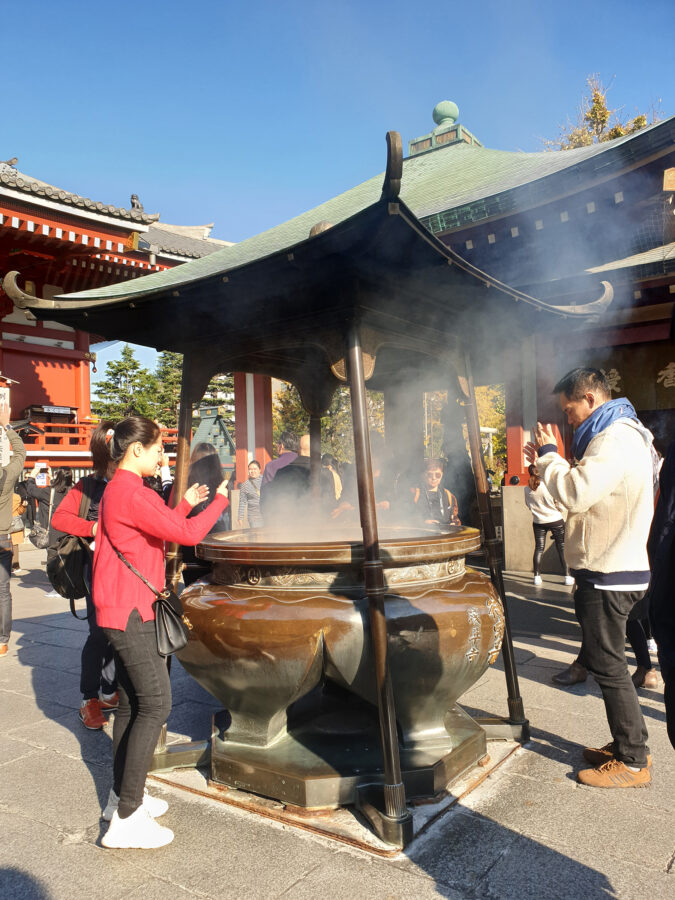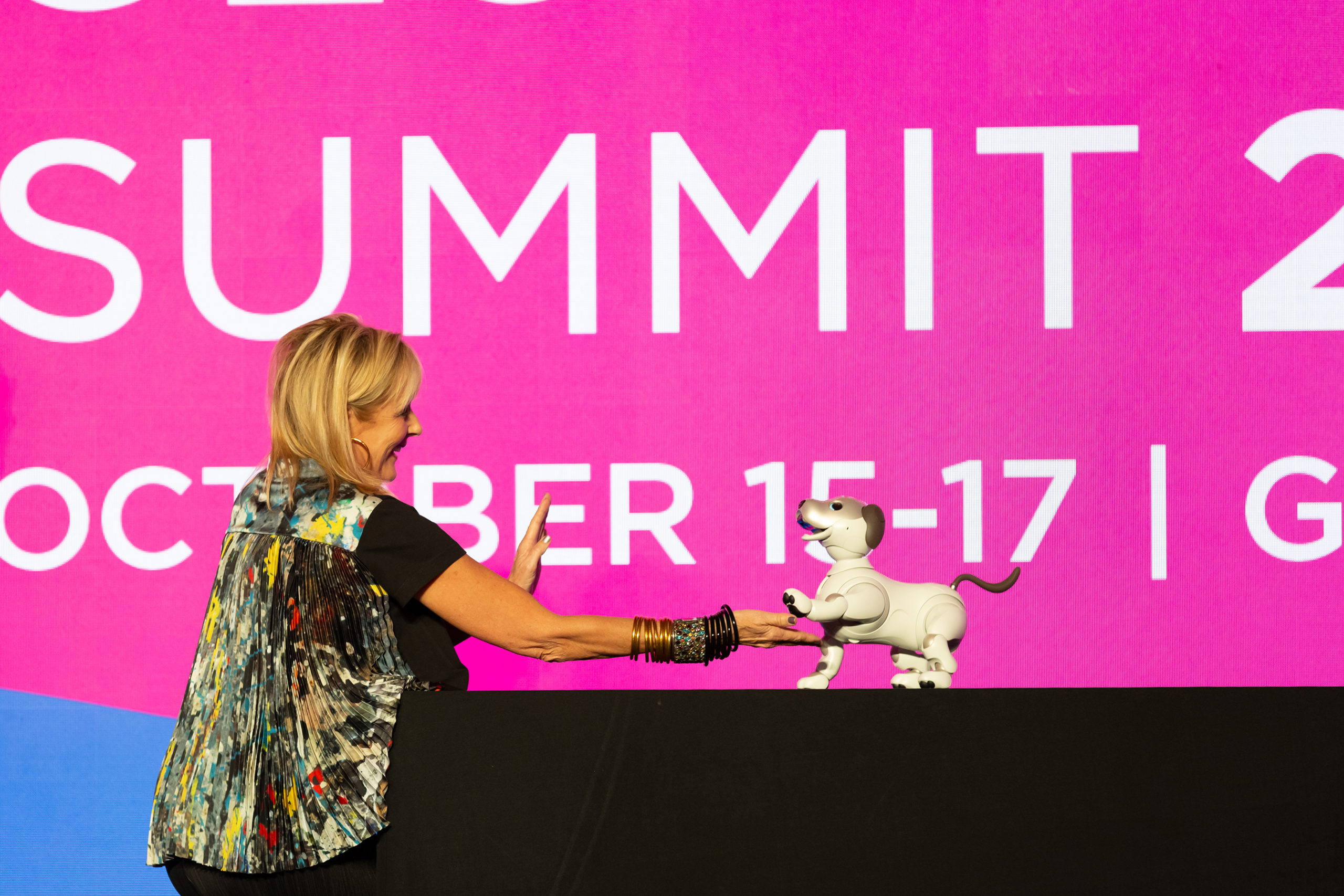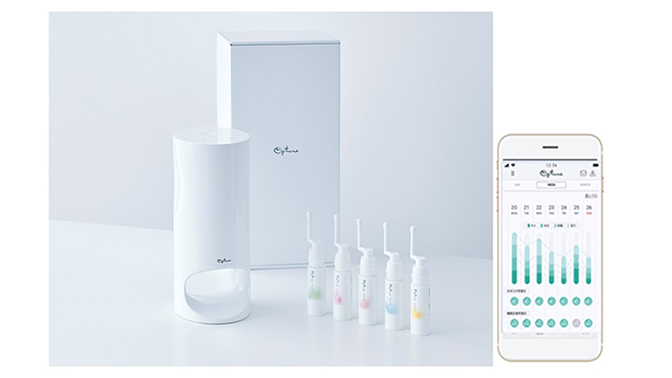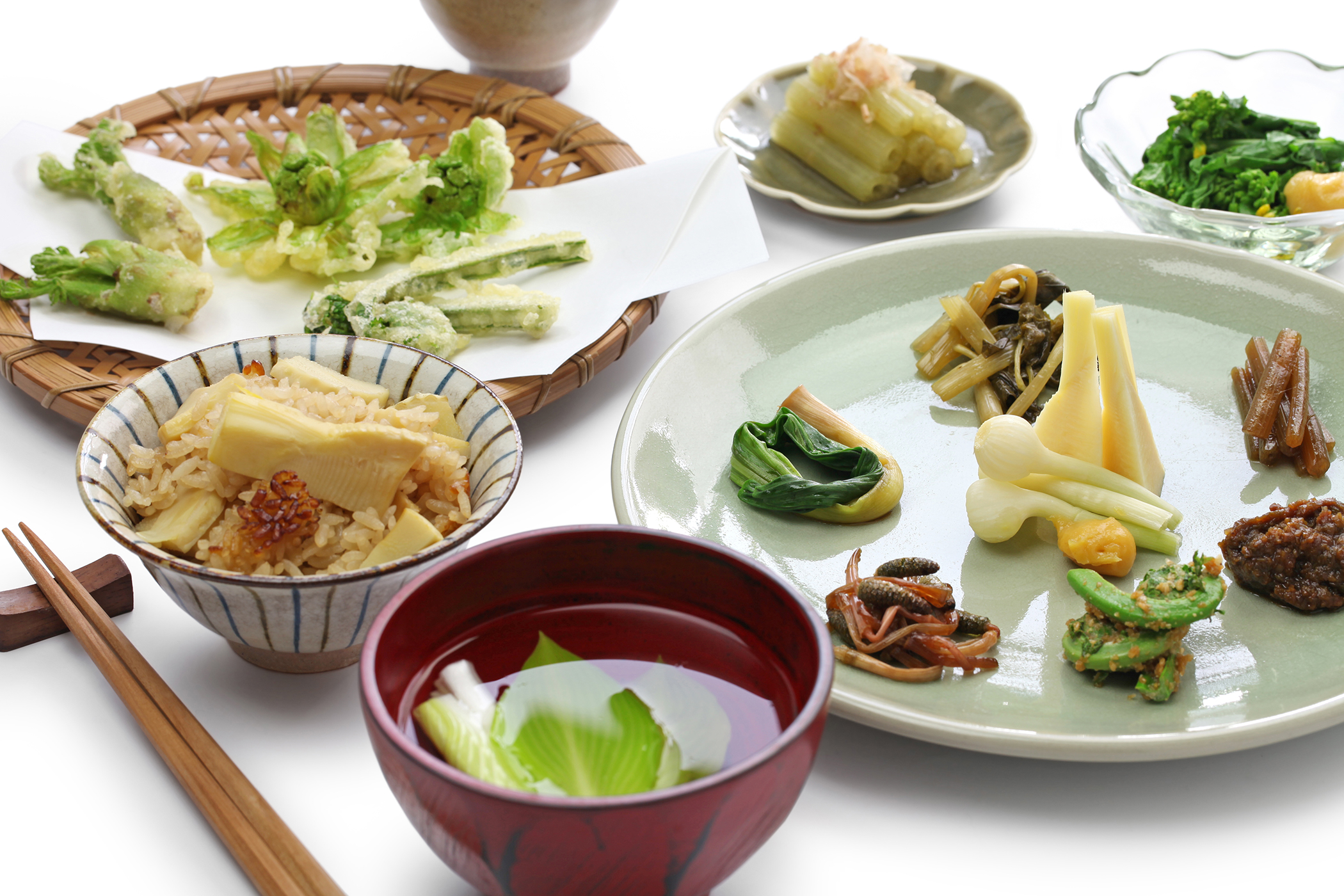J-Wellness
Brilliantly marrying revered traditions with innovative technologies, Japan asserts a comprehensive culture of wellness—and encourages the world to follow suit.
By Peter Eadon-Clarke
As awareness of the 100-year Life Society spreads globally, it is natural to look to Japan[1][2]. In 1965, Japan had 153 centenarians, and in 2017, there were 67,824, representing the largest per capita ratio of them in the world. Fifty percent of Japanese citizens born in 2007 are expected to reach 107[3]. There are lessons to be learned from Japan’s lengthy leadership in longevity. Japan is not standing still, but rather executing exciting innovations on top of its cultural traditions of trust, exacting quality in all matters and a deep reverence for nature.
Recent years have seen each of these become a global phenomenon: Ikigai, purpose but at a measured pace[4]; Kintsugi, “art of repairing broken pottery”; Wabi-sabi, embracing imperfection and transience[5]; Marie Kondo, de-cluttering by auditing the spiritual value of our possessions[6]; and Shinrin-Yoku, forest bathing[7]. Japan is also known for its wellness-related products.

Incense is used to purify, cleanse and relax. With a reputation for the highest quality, Japanese incense sticks have long been exported worldwide. Behind this are deep traditions. Seasoned artisans train for years, with 70 percent of all production being centered on Awaji-shima, a small island southwest of Kobe city. When the burning of incense moved beyond temples, incense-listening, or Koudou, emerged in the 13th century and is still practiced today: a ritual-rich game involving the identification of incense aromas[8]. Japanese incense sticks are being followed globally now by wave upon wave of highly distinctive J-Wellness products and techniques.
CONNECTING TO OTHERS
Iki-iki Plazas, the Stress Check Program, social robots
Social, community wellness and innovating for aging societies are two global mega trends where Japan’s policy is to empower individuals and companies. As a World Health Organization (2012) study demonstrated, better health is associated with high “social capital,” such as trust between neighbors, repeat interactions and helpful actions reciprocated. Japan’s Iki-iki Plazas, neighborhood facilities for generational mingling, recreation[9] and learning, are strengthening people’s mutual trust. Emerging from Japanese psychological studies, “Iki-iki” captures the subjective aspects of wellbeing deep within the human mind, such as positiveness, stability of mood, self-acceptance, and life satisfaction[10]. With government support, Ikiiki Plazas are spreading locally nationwide.
Japan’s Ministry of Health, Labour and Welfare stated in its 2012 policy document that mental health is as important as physical health. Since December 2015, all employees in companies of 50 or more people complete mandatory annual stress assessments. When approving this legislation, the Japanese Diet concluded that the Stress Check Program should focus on the primary prevention of mental disorders, not the screening of mental disorders, and this should be combined with improving the psychosocial work environment[11]. Corporate support programs include Sumitomo Corporation’s Iki-iki Waku-Waku (energy and excitement) Health and Productivity Management program[12].
The Stress Check Program, and the separate mandatory annual health check for employees, are not expected to stay unique to Japan for long. We expect other countries’ national health systems to embrace wellbeing. Japan’s corporate leaders are acting as health ambassadors. To quote Miwako Date, president of Mori Trust, at the 2019 Global Wellness Summit (GWS) in Singapore: “Caring for people’s comfort and health is essential for enhancing productivity. We have set ‘wellness for all’ as one of our key visions for real estate development.”

Prime Minister Shinzo Abe’s Council for Designing the 100-year Life Society concluded in June 2018 with two key recommendations: 1) significant increases in pay for long-term nursing care workers and 2) a “drastic expansion of recurrent education” to enable multistage lives. Japan pursues a philosophy of no one being left behind. Long-term care provision is a crucial test of this, especially since Japan’s government is predicting 380,000 care staff vacancies by 2025. Robots are spreading through the nursing care industry to improve the productivity of care workers, e.g., physical assistance. Social robots provide psychological support, such as PARO, the AI-driven interactive furry seal from Tsukuba’s National Institute of Advanced Industrial Science & Technology. Studies confirm that PARO reduces anxiety and depression, and by calming down dementia patients, incidents of them wandering off have been reduced. Other social robots include RoBoHon monkey from Sharp and Sony’s aibo puppy dog that was demonstrated at the 2019 GWS in Singapore and gave the hundreds of audience members the experience (and surprise for many) of falling in love within about 30 seconds.
CONNECTING TO TECHNOLOGY
J-Beauty, Kao’s Future Skin by Fine Fiber Technology and Shiseido’s Optune
Reflective of an exacting quality in all matters, J-Beauty is about long-term reliability. This includes an anti-aging focus and a simplified beauty regime backed by science. All of this is the antithesis of “fast fashion.” In Japan, purity and deep cleansing are culturally based, with morning and evening bathing rituals having supported the original cleansing oils popularized by Shu Uemura. Today’s daily routine is typically double cleansing followed by an essence lotion (a clear liquid that hydrates and preps), a serum (a watery liquid with beneficial, usually natural ingredients) and a moisturizer. Facial masks are a weekly activity. Since layering is at the core of J-Beauty, most of the products are of a very light texture resulting in super-hydration of the skin. The goal is effervescent skin, “bihaku,” a bright skin tone, and the elimination of sun-related skin damage. Products emphasize natural, functional, nontoxic, sustainable ingredients. A leading essence lotion is the SK II facial treatment essence, with the patented key ingredient Pitera (galactomyces ferment filtrate), a blend of 50 micronutrients with anti-aging properties.
J-Beauty’s technology and innovation leadership are leading to revolutionary products:
Future Skin by Fine Fiber Technology was launched in December 2019 under the Kao brand “est” and the Kanebo brand “SENSAI,” combining an essence with an ultrafine membrane, delivered by a diffuser, for a nighttime skin-care routine. In addition to protecting against dryness and maintaining a moisture-rich environment, the membrane activates protein expression in the skin. The translucent membrane stays in place overnight like a second skin, which is then peeled away the following morning. Kao expects to advance Fine Fiber Technology into makeup, through being able to create a natural look by covering pores, blotches and uneven skin color.

Shiseido opened a 76,000-square-foot Global innovation Center in late 2018, committed to cross-discipline research and dedicated to delivering the future. Visitors are encouraged to explore the facilities. The full launch of its new Optune product in July 2019 saw the arrival of data-driven, automated, personalized skin care[13]. An Internet of Things (IoT) system with a dedicated iPhone app analyzes, prepares and dispenses the optimum serum and moisturizer for the user’s skin. The dispenser has 80,000 possible skin-care combinations. Skin quality analysis from a smartphone photo and sleep data used to detect biological rhythm disruption are combined with locational environmental data (time, temperature, humidity, pollen and PM2.5 air quality). Users are also able to input data on their mood.
CONNECTING TO NATURE
Shinrin-Yoku (Forest Bathing), Therapeutic Onsens and yummy Shojin Ryori vegan temple food
Japan’s deep reverence for nature also acts as preventative healthcare. For example, forest bathing began in 1982 with a Japanese national health program. Coordinated by the Forest Therapy Society, there are now 62 official healing forests and 1,200 certified guides, with over 2.5 million people walking the healing forest trails in 2018[14]. Studies support the breadth of health benefits of connecting all five senses to nature, from reduced blood pressure, lower stress and improved cardiovascular and metabolic health to lower blood-sugar levels and improved concentration, memory and energy[15][16][17]. The phytoncide in cedar and cypress has been shown to have calming effects on people, as well as providing a boost to the immune system, with one study having shown a 53 percent increase in the count of the body’s natural killer cells after two days in these forests.
Dr. Qing Li of the Nippon Medical School in Tokyo and president of the Forest Therapy Society, who also spoke at the 2019 GWS, notes that we spend 93 percent of our time indoors, leading to a nature-deficit disorder. As the inbound tourism boom is discovering, Japan has an incredible wealth of natural assets to facilitate recovery: in addition to the 62 healing forests, there are 20,972 onsens (hot springs), two-thirds of the global total, providing a rustic, authentic, and hyper-specific wellness experience. In addition to the medicinal benefits of the various minerals in the water, deep-soaking bathing has thermotherapeutic effects (a higher body temperature stretches capillaries improving circulation, increasing metabolism and reducing fatigue), water pressure effects (improving the flow of your blood and lymph fluid) and buoyancy effects. The latter, by reducing the body’s weight to one-tenth of what it normally is, allows muscles and joints to rest, enabling tensions in the body to dissipate. Japanese bathing influences are appearing worldwide. The new Shou Sugi Ban House in the Hamptons, US, has a Japanese design, hinoki soaking tubs, tea ceremonies, etc.

The 2018 Monastery Stay & Meditative, Spiritual Cuisine legislation opened Japanese temples to lodging tourists, enabling visitors to access their inner Zen with meditation, silence and the famous vegetarian cuisine that Buddhist monasteries offer known as Shojin Ryori. “Shojin” means a devotion to pursue a perfect state of mind, while “ryori” means food. Dating back to the 6th century, it is prepared around soybean-based foods such as tofu and incorporates seasonal vegetables, wild mountain plants and nuts. Meat, fish or other animal products and pungent flavors such as garlic and onion are excluded. The monks employ two “rules of five”: five colors (green, red, yellow, black and white) and five flavors (sweet, sour, salty, umami and bitter). Encouraging contemplation and appreciation, the cuisine leads to balance and alignment of the body, mind and spirit.
CONNECTING THROUGH THE OLYMPICS TO THE WORLD
Move to be well, the 2020 Tokyo Olympics, an irresistible comprehensive culture of wellness
With no gender or age limitations, Japanese martial arts such as judo, karate and aikido remain wildly popular, contributing to Japan’s overall strong showing in the physical activity marketplace. The 2019 Global Wellness Institute Move to be Well report ranked Japan third in the total physical activity market behind the US and China. Japan has a relatively high recreational physical activity participation rate of 69.6 percent (the US is at 58.8 percent, while China is at 48.6 percent, respectively).
Along with the billions watching through global media, the expected 600,000 overseas visitors to the July–August 2020 Tokyo Olympics will see more than just the sports events. Jon Omori, the Tokyo-based special advisor and coordinator for the US Olympic Committee comments: “Beyond the sports stadiums, visitors will experience Olympic standard focus and dedication in everyday activities in Japan.” While highly distinctive J-Wellness products and techniques are gaining wider recognition, we believe the Olympics will reveal the holistically whole of J-Wellness and Japan’s irresistible comprehensive culture of wellness. The resulting benefits to global wellness are expected to make the upcoming Olympics the most consequential ever.
ENDNOTES
[1] The 100-Year Life: Living and Working in an Age of Longevity by Lynda Gratton and Andrew Scott, 2016.
[2] Extra Time: 10 Lessons for an Aging World by Camilla Cavendish, 2019.
[3] Japan Begins to Embrace the 100-Year Life by Leo Lewis, Financial Times, 8 August 2018.
[4] Ikigai: The Japanese Secret to a Long and Happy Life by Hector Garcia and Francesc Miralles, 2016.
[5] Kintsugi Wellness: The Japanese Art of Nourishing Mind, Body, and Spirit by Candice Kumai, 2018.
[6] The Life-Changing Magic of Tidying by Marie Kondo, 2010.
[7] Shinrin-Yoku: The Art and Science of Forest-Bathing by Dr. Qing Li, 2018.
[8] Incense Listening in Japan: as Intricate as a Tea Ceremony – How You Take Part in a Session by Lucy Dayman, South China Morning Post, 15 April 2019.
[9] Is Social Capital Good for Health? A European Perspective by Lorenzo Rocco and Marc Suhrcke, 2012.
[10] The Role of “ikiiki (Psychological Liveliness)” in the Relationship between Stressors and Stress Responses among Japanese University Students by Yoshiyuki Tanaka and Akira Tsuda, Japanese Psychological Research, Volume 58, No.1.71-84, 2016.
[11] The Stress Check Program: a New National Policy for Monitoring and Screening Psychosocial Stress in the Workplace in Japan by Norito Kawakami and Akizumi Tsutsumi, Journal of Occupational Health, 2016.
[12] Adoption of the “Declaration of Iki-iki Waku-waku Health and Productivity Management,” Sumitomo Corporation, September 2018.
[13] Shiseido Launches Full-Scale IoT Skincare Service Brand “Optune”: Company news release, 1 July 2019.
[14] https://www.fo-society.jp/therapy/cn45/index_en.html
[15] Forest Bathing Enhances Human Natural Killer Activity and Expression of Anti-Cancer Proteins by Li Q, et al., 2007.
[16] Effect of Phytoncide from Trees on Human Natural Killer Cell Function, by Li Q, et al., 2009.
[17] Effects of Forest Bathing on Cardiovascular and Metabolic Parameters in Middle-Aged Males by Li Q, et al., 2016.
Copyright © 2019-2020 by Global Wellness Summit.
If you cite ideas and information in this report please credit “2020 Wellness Trends, from the Global Wellness Summit”.
For more information, email [email protected].


